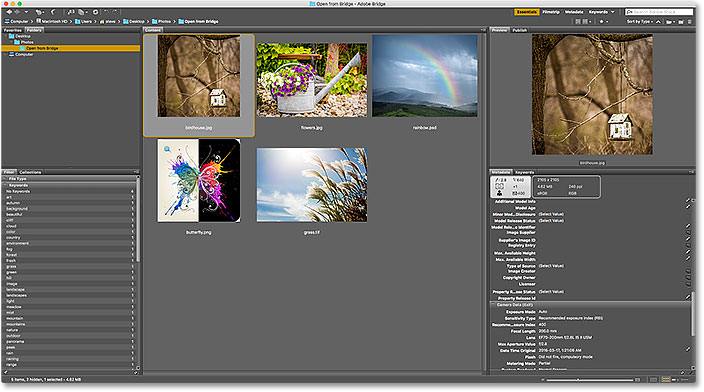Mastering File Type Associations in Adobe Bridge: A Comprehensive Guide to Customizing File Handling for Enhanced Workflow Efficiency

Introduction:
Adobe Bridge serves as a versatile asset management tool, providing users with a centralized platform for organizing, browsing, and accessing a wide range of media files. One of its powerful features is the ability to customize file type associations, allowing users to specify default applications for opening and editing various file types directly from Bridge. In this extensive guide, we embark on a journey to explore the intricacies of changing file type associations in Adobe Bridge, equipping users with the knowledge and techniques to streamline their workflow and enhance productivity.
Understanding File Type Associations:
Before delving into the process of changing file type associations in Adobe Bridge, it’s essential to understand what file type associations are and why they matter. File type associations determine which application is launched when a specific file type is opened or accessed. By customizing file type associations, users can ensure that files are opened and edited using their preferred applications, streamlining the workflow and saving time.
Changing File Type Associations in Adobe Bridge:
Adobe Bridge offers a straightforward method for changing file type associations, allowing users to specify default applications for opening and editing various file types. Let’s explore the step-by-step process for changing file type associations in Adobe Bridge:
- Launch Adobe Bridge:
- Open Adobe Bridge on your computer by clicking on the application icon or selecting it from the Start menu or Applications folder.
- Access Preferences:
- Once Adobe Bridge is open, navigate to the “Edit” menu (Windows) or “Adobe Bridge” menu (Mac) and select “Preferences.”
- Navigate to File Type Associations:
- In the Preferences dialogue box, locate and select the “File Type Associations” option from the list of categories on the left-hand side.
- Choose File Type:
- In the File Type Associations section, you’ll see a list of file types along with their associated applications.
- Scroll through the list or use the search bar to find the file type for which you want to change the association.
- Edit Association:
- Once you’ve located the desired file type, click on it to select it.
- To change the default application for opening the selected file type, click on the “Edit” button next to the “Open With” field.
- Select Default Application:
- In the Open With dialogue box, you’ll see a list of applications installed on your computer that are capable of opening the selected file type.
- Choose the desired application from the list or click on the “Browse” button to locate and select a different application from your computer.
- Confirm Changes:
- After selecting the default application for opening the file type, click “OK” to confirm your changes and close the Open With dialogue box.
- Save Preferences:
- Finally, click “OK” or “Apply” in the Preferences dialogue box to save your changes and close the Preferences window.
Advanced Techniques and Considerations:
In addition to the basic steps outlined above, there are some advanced techniques and considerations to keep in mind when changing file type associations in Adobe Bridge:
- Batch Processing:
- Adobe Bridge allows for batch processing of file type associations, enabling users to apply changes to multiple file types simultaneously.
- To batch process file type associations, select multiple file types in the File Type Associations section and follow the same steps outlined above.
- Custom Applications:
- Users can specify custom applications for opening and editing file types by manually entering the application’s path in the Open With dialogue box.
- This is useful for associating file types with specialized or lesser-known applications not listed in the default application list.
- Consider Workflow Needs:
- When changing file type associations, consider your workflow and the applications you use most frequently for opening and editing specific file types.
- Choosing default applications that align with your workflow can significantly enhance productivity and efficiency.
Conclusion:
Customizing file type associations in Adobe Bridge is a valuable tool for optimizing workflow efficiency and enhancing productivity. By specifying default applications for opening and editing various file types, users can streamline their workflow and ensure seamless integration with their preferred software tools. Whether you’re a photographer, designer, or multimedia professional, mastering file type associations in Adobe Bridge is sure to elevate your workflow to new heights of efficiency and effectiveness. So, dive in, explore the customization options available in Adobe Bridge, and watch as your productivity soars in the world of digital asset management.







